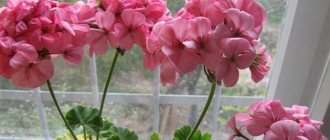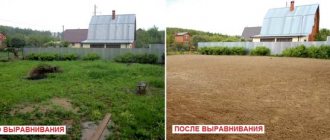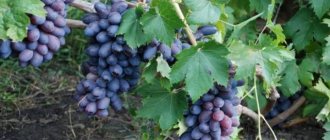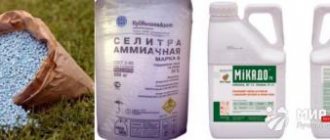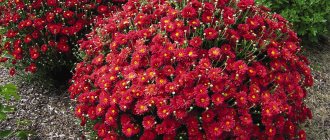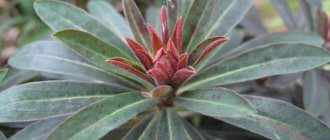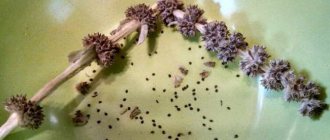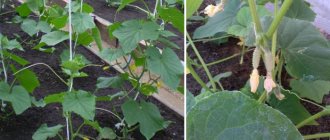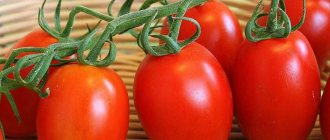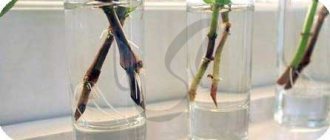Perennial golden ball flower
C. Linnaeus is rightfully considered the discoverer of rudbeckia. From the Atlantic, rubecia later “moved” to the European part of the Earth. In the wild habitat, there are the following varieties of rudbeckia: dissected, glossy, hairy, shiny.
A variety such as “Golden Ball” came from dissected rudbeckia. These plants are perennial, reaching a height of 2 to 2.5 meters. The leaves are green, very dissected. The flowers have a round shape, the diameter of the flowers varies around 10 cm. The inflorescences are a collection of tubular-shaped petals with reed petals around.
The Golden Balls themselves differ mainly in height. Golden balls grow no more than one meter. Before the intervention of breeders, the Golden Ball had one important drawback, which was that the high parts of the bush tilted in different directions due to its own gravity. It is not difficult to guess that this greatly spoiled the beauty of the rudbeckia flower beds.
Rudbeckia brillianti
It owes its name to its shiny leaves. This is a profusely flowering and incredibly lush plant with large, up to 10 cm in diameter, bright yellow flowers, and can reach a height of up to 120 cm, which is why it is often called the Golden Tower. This rudbeckia is perennial, it overwinters well in the ground in our climate, it is very unpretentious, prefers moist, but not swampy, soils. Flowering occurs at the end of July - beginning of August; at the beginning the flowers are bright orange, but closer to autumn they acquire a red-brown hue. Propagated by dividing the rhizome or using seeds.
Golden balls flowers growing
Rudbeckia does not require complex care. Even without basic proper care, she can live quite a long time. However, despite this, you should adhere to simple rules for caring for a flower.
Rudbeckias prefer well-lit areas. Before planting rudbeckia, you need to weed the ground 20-20 cm, and also clear the bed of weeds. Later, use humus or compost, as well as mineral fertilizers. Humus or compost is needed in the area of 5 kg per 1 square meter.
The best period for planting seedlings is May. The advantage of planting seedlings is that the plant blooms in the same season.
Sequence of planting stages: 1. Dig holes in the ground at intervals of about 40 cm. 2. Place the seedling in the hole and dig it in. 3. Water. 4. There is no need to compact the soil. 5. Until rubekia takes root, it is necessary to water it regularly.
It is also permissible to plant rudbeckia with seeds. However, the soil should not be heavy, slightly acidic or neutral. Planting of seeds should take place in the middle of the first month of June.
The seeds are not deepened into the ground; they are placed in the ground at intervals of 15 cm. Sprinkle a small amount of soil on top and water generously. By autumn, small bushes of greenery should grow. Next year, in the spring, you need to plant these bushes at a distance of half a meter from each other.
Planting from seeds has its pros and cons. On the one hand, this way rubekia will bloom only next year. On the other hand, it will bloom earlier than those planted with seedlings.
Flower golden ball care
In this article we will look at the conditions for caring for rudbeckia in open ground. These flowers are considered quite drought-resistant. However, rudbeckia will feel better if you water more abundantly in hot weather. If this is not done, the flowers may lose their beauty.
After the rudbeckia has bloomed, cut off the part of the plant that is above the ground. About 10 cm should remain from the stem. In open areas, rudbeckia grows very quickly and can interfere with neighboring plants. This is important to consider when planting plants. You can choose a separate place for rudbeckia or make a partition for the roots.
Every 5 years the flower needs to be thinned out; you can remove whatever you want. In winter it is not necessary to cover the flower. Rudbeckia needs to be fertilized in May and at the end of summer. The first feeding is done before flowering, the second can be done in the first days of autumn. Any mineral complex is suitable for feeding this plant. Without feeding, the plants will be less lush and the flowers will be less vibrant in color.
Pests of rudbeckia are not terrible, nor are diseases. It is quite resistant to both the first and the second. If you neglect the plant too much, powdery mildew may develop on it. This disease appears as a white coating on the plant. If you do allow this to happen, you will need to spray the plants with liquid copper sulfate or colloidal sulfur.
If you notice brown spots on rudbeckia, it means that there is a leaf nematode. If your plant gets sick with this disease, you should spray it with Bazamid or Nemaphos.
Reproduction of Golden Balls
Reproduction of rudbeckia does not require human effort. Golden ball grows well by self-sowing. If you want to engage in its cultural propagation, you can buy ready-made seedlings at any garden store.
You can also get seedlings on your own. To do this you need to follow a few simple steps. First, plant the seeds in pots in early spring. Then the rudbeckia will bloom in the same year. Before planting the seeds, you can do stratification. It will need to be carried out a little less than a month before disembarkation; 3 weeks will be enough. This procedure should be carried out as follows: place the seeds in the refrigerator for the specified period, then keep them at room temperature for several days.
Ordinary garden soil in combination with humus and sand is excellent for the substrate. Seeds should be planted no more than 3 mm deep, and a distance of at least 10 cm should be maintained between each planting material planted.
In order to grow beautiful flowers from seeds, you must cover them with film or glass. After planting the seeds, you need to water lightly. Before the first shoots appear, which are already the size for planting, you need to ventilate the soil and carry out small waterings.
The first shoots will be noticeable already at the beginning of the third week after planting the seeds. Caring for seedlings requires special attention. Firstly, you should always monitor the moisture content of the upper layers of the soil. Also, do not forget about sufficient sacredness. In addition, seedlings need hardening. Hardening should be done in the fresh air, for example, on a terrace or balcony. The temperature during hardening should not fall below 15 degrees, otherwise the seedlings will die. When the height of the sprouts has reached 20 cm, they can be planted on the site.
If you already have an adult flower, then it can be used as material for new samples. Reproduction in this way is carried out before summer or after summer.
First, you need to dig up an existing plant. After this, you need to divide the roots into several parts. If you cannot see the rhizome well, then you need to wash it, and the problem will be solved. In order for all parts of the old plant to take root and become full-fledged new bushes, each part must have at least 2 shoots. The shoots must be already mature.
Choose a place for new bushes. Place part of the old bush to a depth of about 10 cm, fertilize with humus. And the last step: compact the soil with your hands and water. The first watering should be plentiful. It is important to remember that if you propagate rudbeckia in this way, it will bloom next season.
Planting seeds in open ground
The rudbeckia plant reproduces well by self-sowing, with the exception of double varieties. Sometimes ornamental plantings grow so large that they turn into weeds more than a meter high. Often, seeds carried by the wind germinate in the most inappropriate places, and rudbeckia clogs the area.
That is why in warm regions you can safely plant grains directly into the ground, without first growing seedlings in a container. In cold, long winters and cool summers, seedlings are first prepared, then young plants are transplanted to the site.
Landing dates
In temperate areas, seeds are sown in early or mid-summer. A simple technique will help simplify the procedure: mix the grains with fine sand, distribute the material on the surface of the substrate, sprinkle a little with a thin layer of loose, slightly moistened soil, and lightly water the planting site. Grown seedlings must be thinned out, leaving an interval of 40 to 50 cm.
Choice of location and lighting
The optimal area for planting Golden Balls is areas where it is mostly sunny and warm. Light shadow is acceptable, but not desirable. When planting the Golden Ball in a shaded place, the flowering will be more sparse, and the inflorescences will not be as large as in good light.
Rudbeckia loves moisture, but even with a temporary lack of watering it grows well. For this reason, wetlands are not suitable for growing Sunhat.
Some more useful tips:
It is important that the soil is loose and contains sand. The plant does not have any special requirements for the type of soil, but the soil must contain an average level of nutrients. The poor substrate is slightly enriched by adding compost; dense soil is made looser with sand. Periodic application of organic fertilizers has a positive effect on the growth of all types of rudbeckia.
Landing rules
Recommendations for flower growers:
Before planting seedlings or adult plants (when dividing) the bush, the area must be fertilized with compost, dug into the bayonet with a shovel, and the surface is leveled. It is useful to pour a solution of potassium permanganate onto the base to reduce the risk of fungal diseases, especially in regions with cool summers; mark the planting zone: taking into account the type and variety, the distance between neighboring bushes is from 40 to 60 cm; Seeds are planted on a cloudy day when there is no rain.
Heat is no less harmful: the soil dries out quickly, seeds germinate less easily; then place small grains mixed with sand on the prepared area, sprinkle the planting material with slightly moistened soil; water the soil, but not very much, so that there is no stagnation of liquid; fertilizing is carried out when the seeds sprout; It is important to water the area on time and ensure that weeds do not interfere with the growth of young flowers.
Combining Golden Balls with other types of plants
As we have already found out, rudbeckias are perennial plants. Planted rudbeckia will please the eye for a single year, so you need to plant rudbeckia where you do not renew the plants annually. Rudbeckia is a very beautiful flower, it is well suited for planting next to fences or walls of the house. Rudbeckia will also look beautiful next to gazebos and recreation areas, and will harmoniously combine with tall plants.
If you plant it on your site, where it is quite windy, then it is worth securing the stems of tall varieties. Rudbeckias emphasize all their beauty in combination with bouquet flowers, adding a certain charm to them. Once cut, rudbeckia flowers will delight you for a week or more. Rudbeckia is an excellent option for those who are just starting to try their hand at gardening or simply do not want to spend a lot of effort on caring for plants, but still want to have a beautiful, bright area.
Golden balls bloom for a long time, and they are extremely easy to grow, so it is not surprising that this flower is so popular among gardeners.
Rudbeckia purpurea
A cold-resistant, light-loving plant, the height of the stems can reach 90 cm; the flowers can be confused with chamomile in shape and color. Reproduction is carried out both using seeds and dividing the rhizome.
Some sources combine this genus with the closely related genus Echinacea

